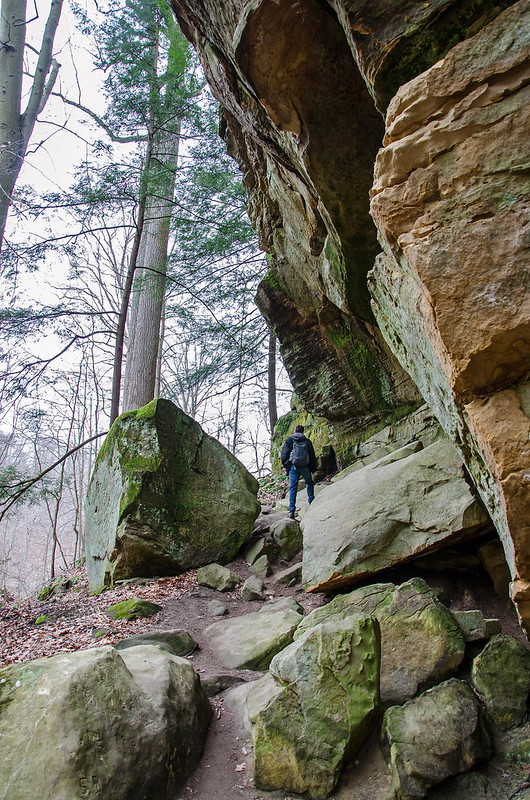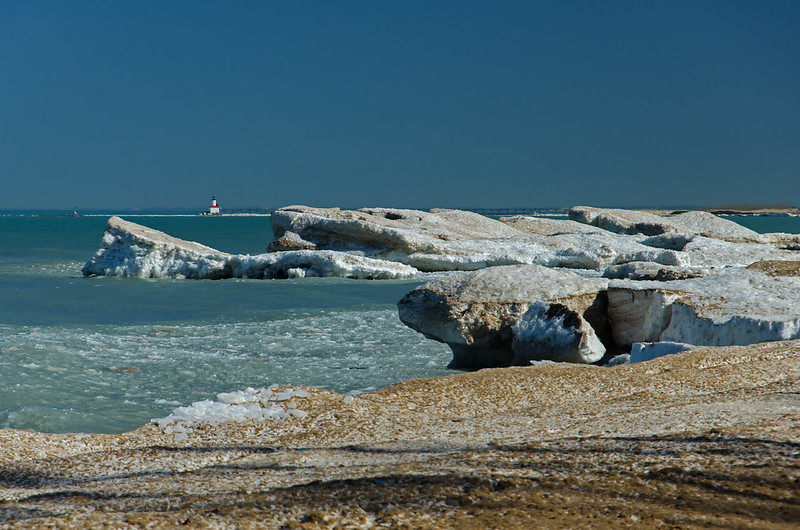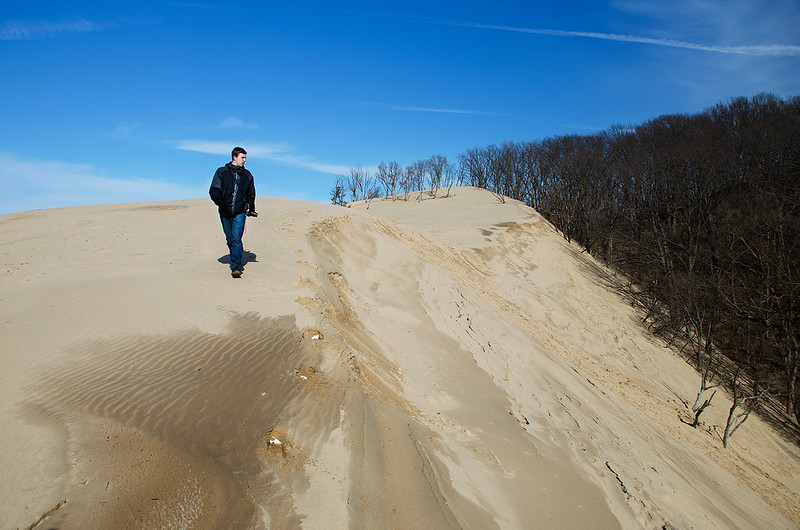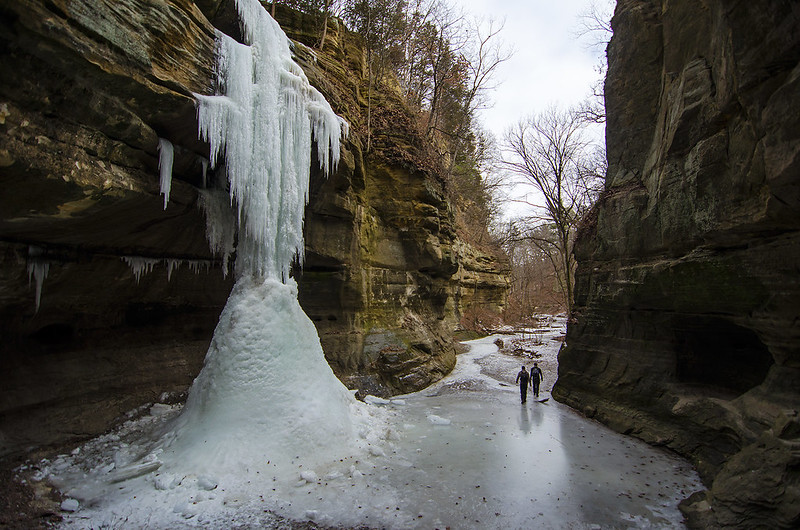
Turkey Run State Park's trail 2 is a one mile, rugged hike that meanders around cliff faces, over hills, and through canyons. One of the more interesting parts of the trail is Gypsy Gulch, a path filled with boulders that have broken away from the cliff walls. Morning fog partially obscured the view of Sugar Creek, seen through the trees in the photo above.
While not necessarily a strenuous trail, it is rugged, forcing hikers to climb over and around boulders to continue on. A small waterfall drips in Gypsy Gulch, and hikers must walk behind it, under the overhanging rock walls.

The old growth trees in this park are beautiful, even in late winter. The Hemlock remain green all year, and are found in the damp canyons of trail 3, but the largest are the Yellow Poplar, also called Tulip Trees. These straight, tall trees reach a height of 100 feet, with no branches on the bottom 60 feet. Seen in the background in the photo below, the Yellow Poplar towers above the trail, It appears huge even though it's a hundred feet away from the hiker.

Trail 2 merges with trail 1, which leads to one of Parke County's historic covered bridges, the Narrows Covered Bridge.













































